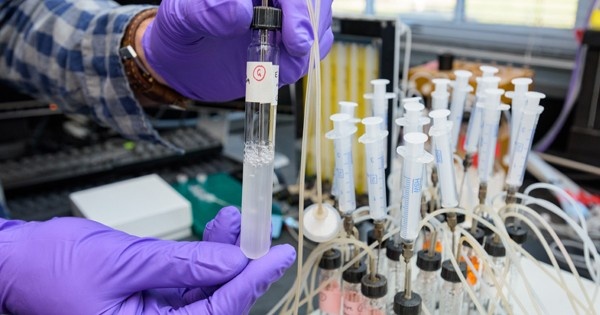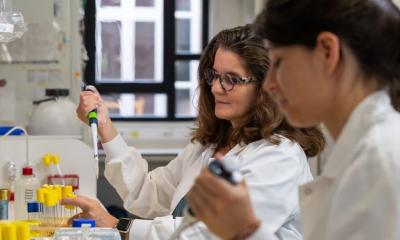News • Stealthy survivors
Tracing the evolution of E. coli
Chemical engineers discover how some bacteria resist threats
The World Health Organization calls antibiotic resistance “one of the biggest threats to global health, food security, and development today.” Each year, about 2 million people in the United States become infected with antibiotic-resistant bacteria, according to the Centers for Disease Control. These infections are difficult to treat and increasingly deadly. In the face of this threat, scientists want to figure out exactly how bacteria evolve. A team from the University of Delaware and University of California, San Diego recently uncovered new insights about how E. coli bacteria mutate in response to a life-threatening challenge. Their results were published in Proceedings of the National Academy of Sciences (PNAS).

A unique approach
“We wanted to study how cells recover from a major blow,” said co-author Maciek R. Antoniewicz, Centennial Professor of Chemical and Biomolecular Engineering at the University of Delaware. UD graduate engineering students Christopher Long and Jacqueline Gonzalez co-authored the paper with Antoniewicz. To do this, the team brought together two experimental methods that aren’t typically used in tandem: whole-genome sequencing and metabolic flux analysis. “One of the novelties of this paper is that we used two complementary approaches to elucidate how these cells evolved,” Antoniewicz said. “This is one of the first times both approaches were combined to see a link between genotype and phenotype.”
At UC-San Diego, Adam Feist, an associate project scientist in bioengineering, and Bernhard Palsson, the Galletti Professor of Bioengineering, modified and then evolved ten strains of E. coli bacteria. They knocked out the bacterial cells’ ability to utilize phosphoglucose isomerase, an enzyme that plays a critical role in the metabolism of glucose, a sugar. Robbing E. coli cells of the phosphoglucose isomerase enzyme is akin to starving them, stunting their growth by 80 percent. However, as these E. coli cells evolved and multiplied, they eventually recovered between 46 and 71 percent of their growth rate. The research team then used genomic analysis and flux analysis to figure out how the cells mutated and adapted to recover. Antoniewicz is a leading expert in flux analysis, so those experiments happened at the University of Delaware.
Antoniewicz, Long, and Gonzalez found three mutations, in the genes sthA, pntAB, and crr, that helped the E. coli cells recover growth. These mutations helped the cells speed up metabolic steps that had been hampered by the absence of phosphoglucose isomerase. “It’s fascinating that you can get rid of one of the most important genes in glucose metabolism and the cell will recover,” Antoniewicz said. “This is evidence of the great flexibility of biological systems.” However, this adaptability is a blessing and a curse, as in the case of antibiotic-resistant bacteria. “Cells are flexible and nimble,” he said. “If you want to stop them from growing, using a single target may not be enough.”
Next, the team is studying a new set of E. coli strains with different characteristics.
Source: University of Delaware
25.01.2018










